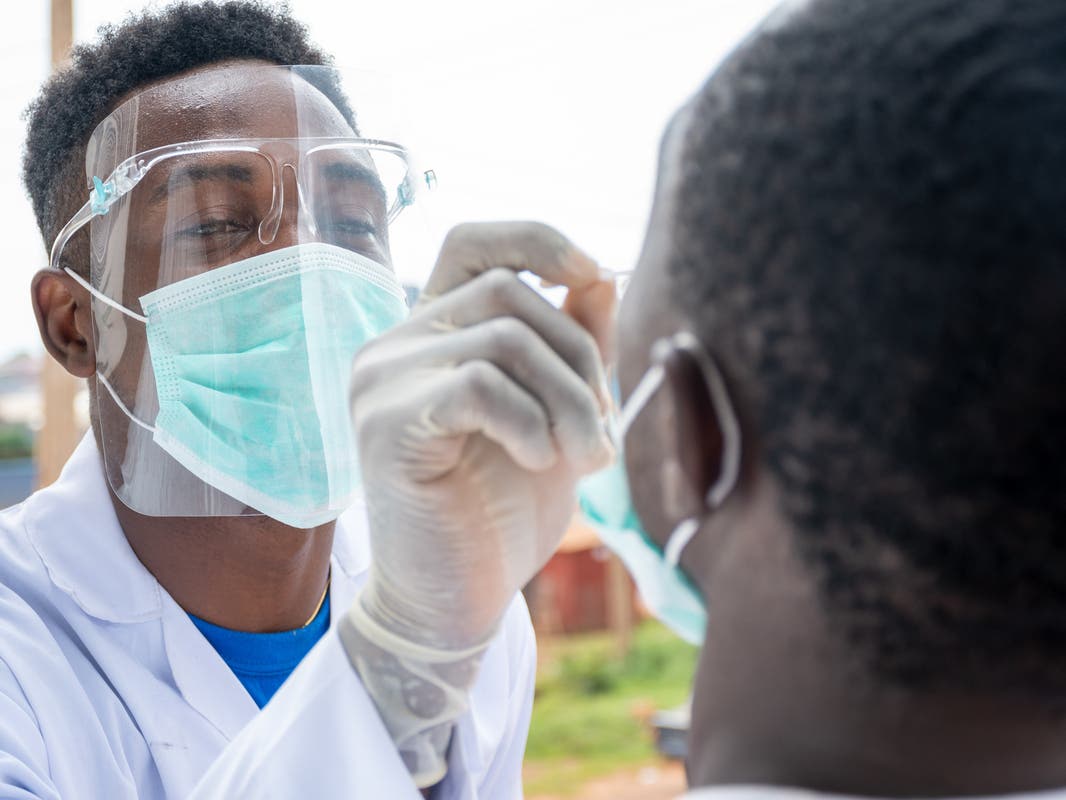Health & Fitness
Indoor Masking Urged As CA Faces ‘Largest Summer COVID Wave Yet’
Health experts say California's heatwave is keeping people indoors, exacerbating a nationwide surge of COVID-19 cases.

CALIFORNIA — Much of the country, including California, is experiencing a summer bump in COVID-19 cases, according to wastewater surveillance data from the Centers for Disease Control and Prevention.
The Golden State is among 27 states reporting “very high” levels and another 17 states reporting “high” levels of wastewater viral activity, as of Aug. 9. This summer is California's worst for COVID-19 infections since 2022, according to the California Department of Public Health, and state health officials urged residents to wear masks indoors once again.
In the last week, 14.3 percent of COVID-19 tests in California came back positive, according to the CDC, compared to 17.6 percent nationally. California hospitals conduct around 11,667 tests per day, the CDPH said. As of last week, 1.8 percent of COVID-19 patients hospitalized in California died.
Find out what's happening in Across Californiawith free, real-time updates from Patch.

Health experts said high temperatures during California's heat wave are keeping people indoors, making the spread of the virus much easier, leading to this summer surge.
The “very high” level is the highest used by the agency to quantify viral activity. Other states in that category are Oregon, Washington, Idaho, Utah, Wyoming, Colorado, New Mexico, Texas, Oklahoma, Kansas, Minnesota, Missouri, Arkansas, Louisiana, Mississippi, Tennessee, Alabama, Florida, South Carolina, North Carolina, Virginia, West Virginia, Maryland, New Hampshire, Maine and Alaska.
Find out what's happening in Across Californiawith free, real-time updates from Patch.
The lowest level reported among states is “moderate,” and no states reported “low” or “minimal” levels of viral activity in wastewater. In July, only seven states reported “very high” levels of viral activity in wastewater and 19 reported “high” levels.
With the current spike in COVID infections, “this is probably going to end up becoming the largest summer wave we’ve had,” Dr. Ashish Jha, dean of the Brown University School of Public Health and former White House COVID-19 response coordinator, told NBC News.
“It’s still not as big as the winter waves, but it is starting to get close,” Jha said, adding that he expects the wave to peak in the next few weeks.
The wastewater surveillance data, though limited, corresponds with a 13-week surge in positive COVID tests reported to the CDC — now more than 17 percent, up from 0.3 percent in early May. Hospitalizations are ticking up as well, with a rate of 6 percent in California as of july 20, still the lowest hospitalization rate of the 2023-24 COVID season.
The region with the highest rates of COVID-19 positive tests includes Texas, Oklahoma, New Mexico, Louisiana and Arkansas, with a positive test rate of 24 percent for the week ending Aug. 3.
The CDC recommends that everyone over 6 months get updated COVID-19 vaccines when they become available this fall, regardless of whether the person has been previously vaccinated. The Food and Drug Administration recommends that pharmaceutical companies formulate vaccines to protect against the KP.2 strain, known as FLiRT variant, which is responsible for about 6 percent of positive COVID cases nationwide.
The World Health Organization declared an end to the COVID-19 public health emergency more than a year ago, but experts say the only way to hold the coronavirus at bay is for people to get vaccinated.
“Population immunity has moved us out of the pandemic,” said Dr. Manisha Patel, chief medical officer for the Centers for Disease Control and Prevention’s National Center for Immunization and Respiratory Diseases. “Now the goal is to make sure we keep that immunity up because it does wane. And the way we keep it up is through vaccination. That is the safest way to keep our country healthy.”
Although it appears illnesses associated with FLiRT aren’t as serious as those caused by other variants, some symptoms set it apart. They include:
- Sore throat
- Cough
- Fatigue
- Congestion
- Runny nose
- Fever or chills
- Headache
- Muscle aches
- Loss of sense of taste or smell
- Diarrhea
Avoiding crowded indoor areas, wearing a mask, and avoiding those who are sick with COVID are all ways to prevent catching the new FLiRT variant, health officials have said.
Get more local news delivered straight to your inbox. Sign up for free Patch newsletters and alerts.